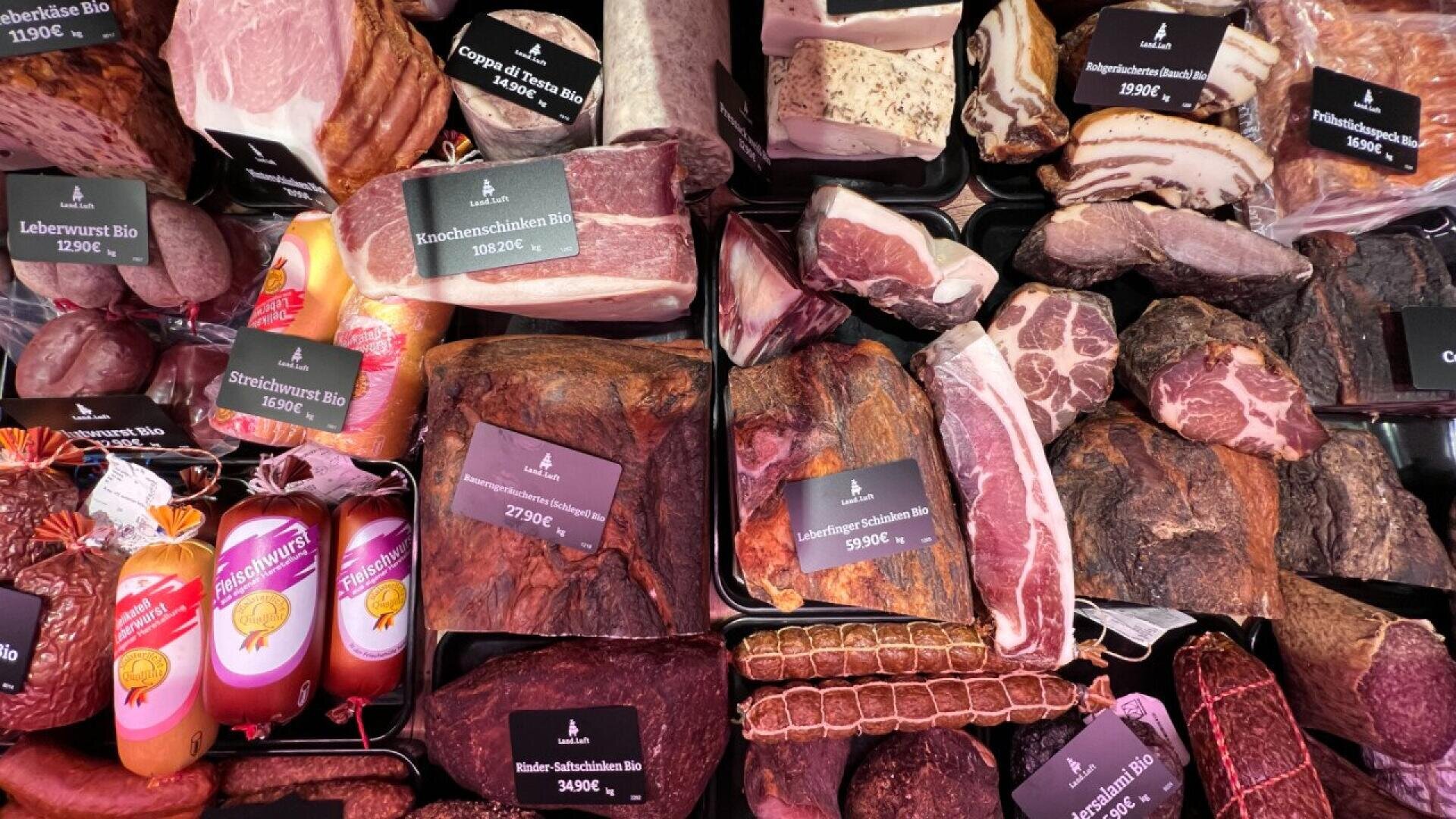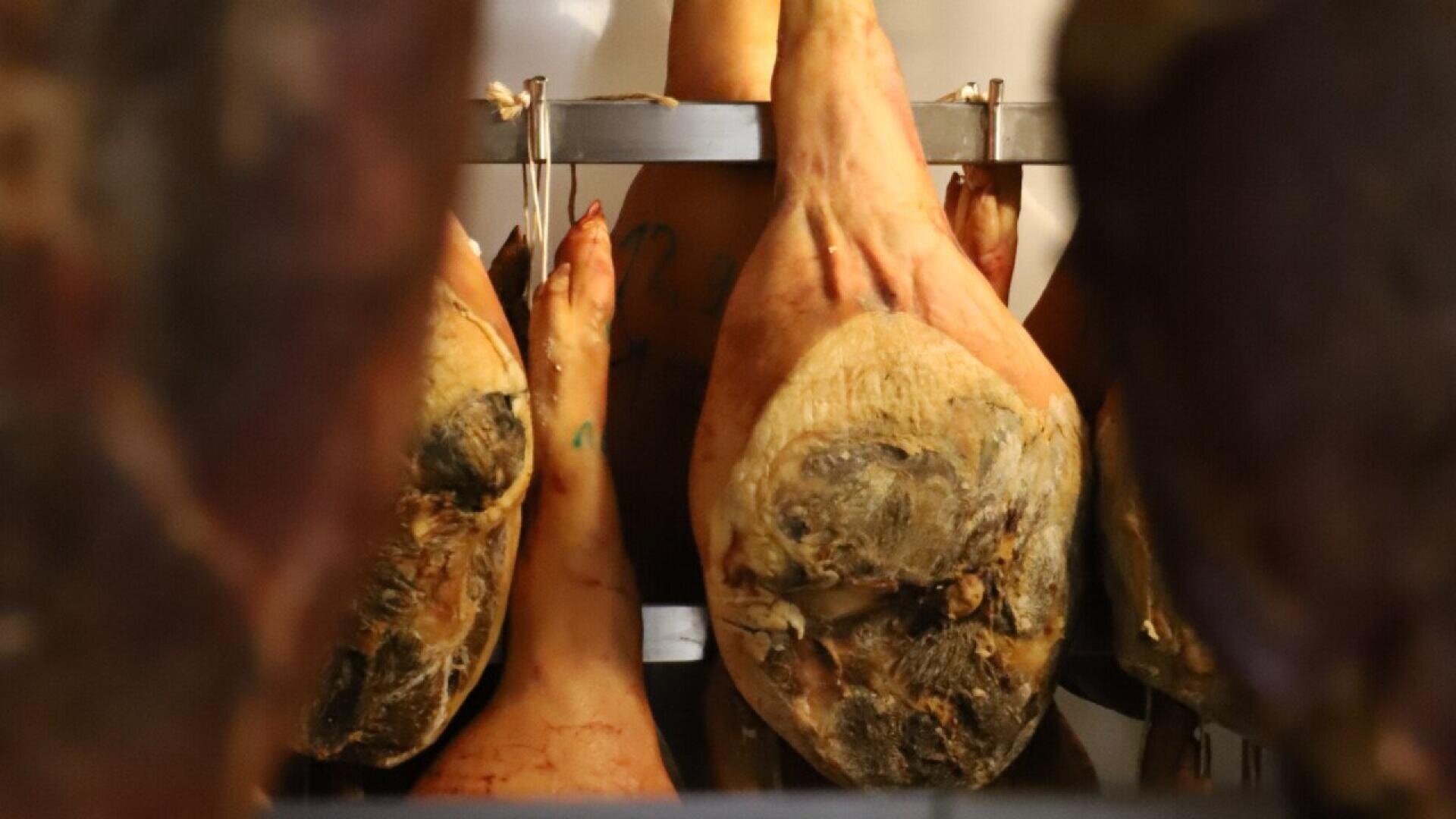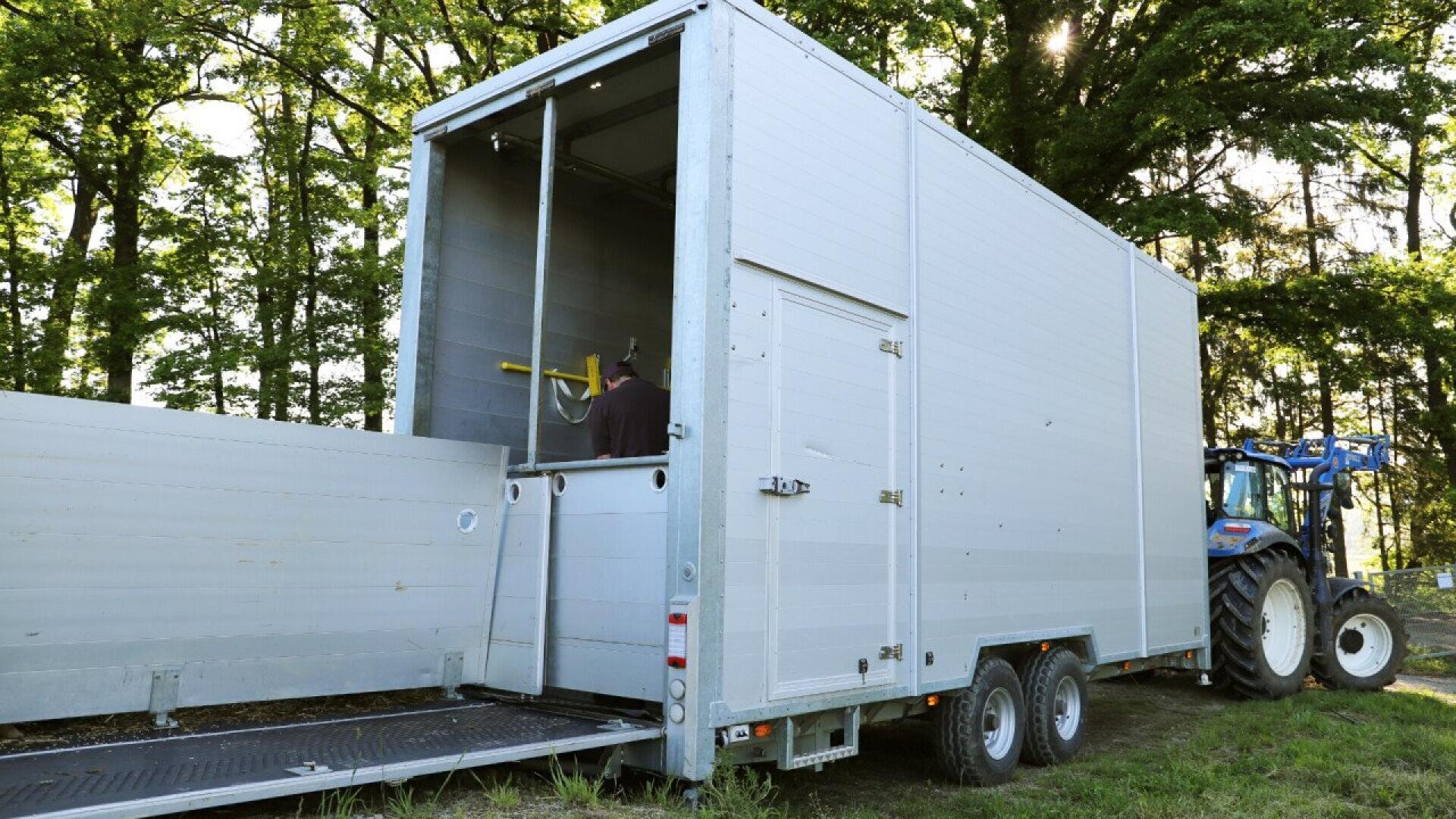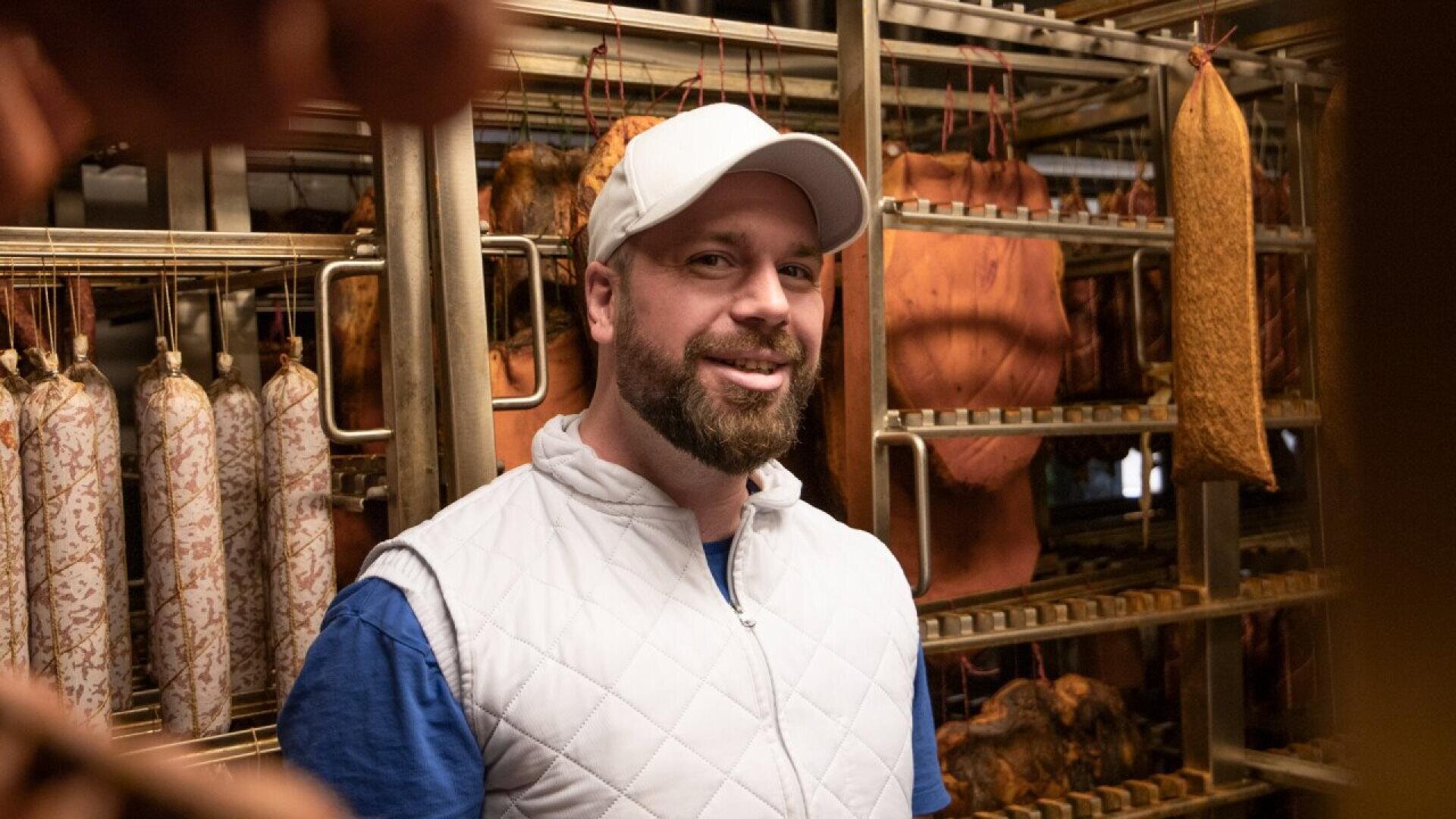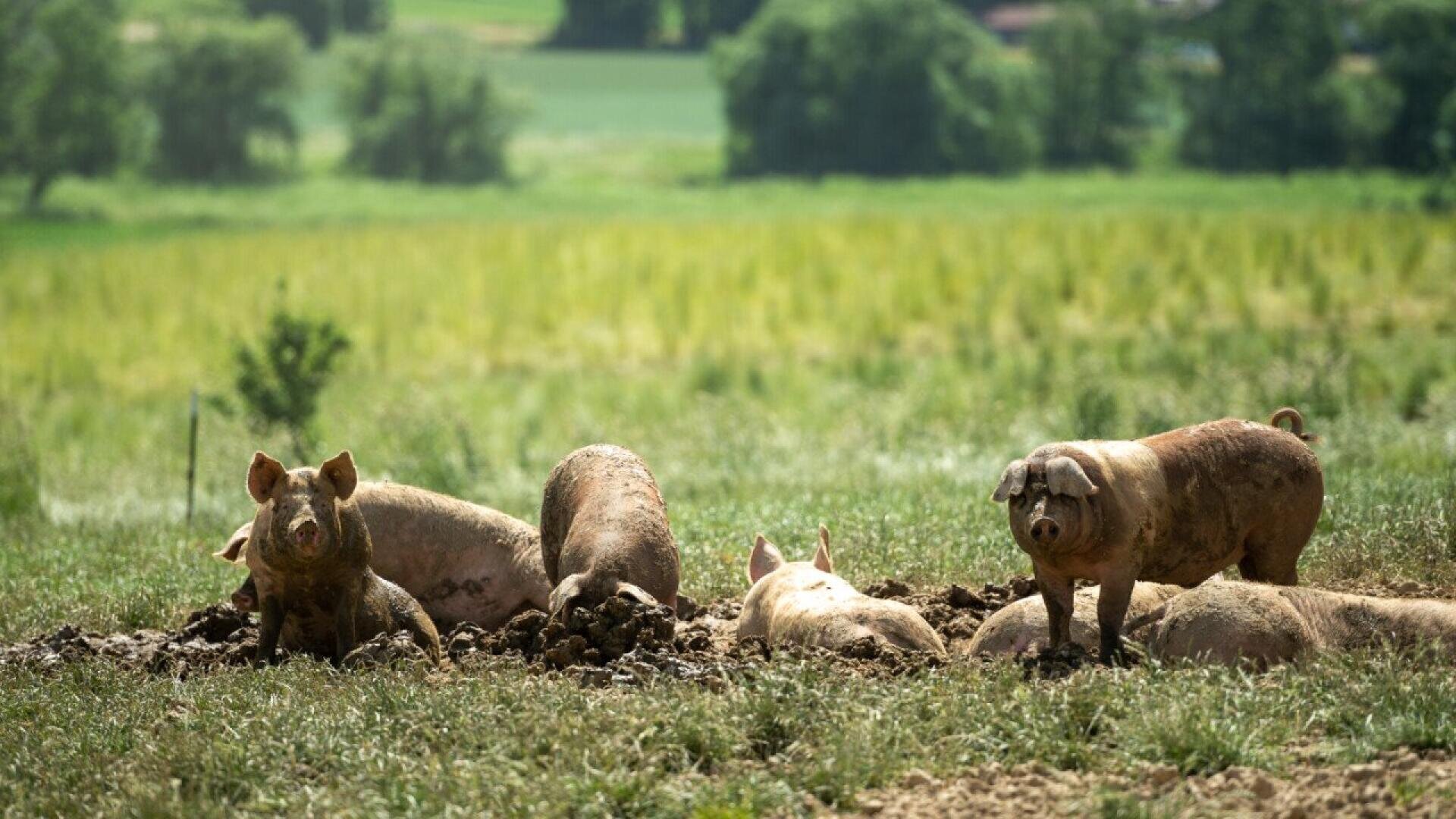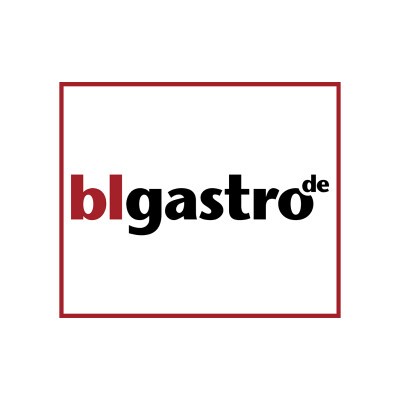#animal happiness
333 m² of space per pig, year-round grazing and mobile slaughtering there, no transport, hot meat processing, farm butchery, organic restaurant - Land.Luft Leberfing, the Lindner Group's organic farming concept, has been showing how sustainability works for five years.
A mother sow wallows in a muddy hollow in the pasture, four of her piglets would love to do the same. But "mum" is still having a good time. A few metres away: the piglet siblings, grazing or resting in or near one of the up to 30 rearing huts. A scene like this is commonplace here - whether in spring, summer, autumn or winter.
In 2015, the Lindner Group, a family-run construction company based in nearby Arnstorf, started an organic farm on 45 hectares of land acquired many years ago around the farm in Leberfing. The company has its own canteens, bistros and runs the Schlossbräu Mariakirchen brewery and hotels, among others. There is also a great demand for meat and sausages there. "The impetus came from the Lindner family, who wanted to provide the best possible conditions and circumstances for farm animals in terms of husbandry and slaughter. Above all, avoiding animal transport was essential," explains Isabella Wieselhuber, Brand Manager since 2019. Following the renovation of the farm, it was opened in summer 2018, including the farm butchery and organic restaurant.
What goes on here in the pastures goes far beyond the current legal requirements for animal husbandry labelling. Even with "organic" husbandry, a pig only has 1.5 square metres of space around it. The six pastures started out with 496 pigs, but today almost twice as many of them populate the extensive grassland. "They are a cross between the Schwäbisch-Hällisches Landschwein and the Duroc-Pietrain sire breed. There are currently 35 sows that give birth to eight to twelve piglets," says the butchery's operations manager, master butcher Andreas Reiser. They stay in the hutches for up to 40 days, then spend up to ten months on pasture until they reach a slaughter weight of around 140kg. There they eat grass and herbs and are fed organic feed grown on the surrounding farmland, e.g. protein crops, which are mixed in-house.
Happy to the end
There are two more pastures, a rearing pasture and a fattening pasture for 68 Murnau Werdenfelser cattle and brown cattle, suckler cow husbandry including a bull that provides offspring by means of natural breeding. No staged idyll here either. 300 to 320 kg carcass weight is the rule. As the animals were not to be transported live, the farm developed its own mobile slaughter trailer - EU-certified since the end of 2017 - to slaughter them on the pasture. "Until then, however, all the animals have had a species-appropriate and happy life," emphasises Isabella Wieselhuber. "On Mondays and Wednesdays from 6 a.m., we slaughter ten pigs each, individually in the trailer, and cattle on Thursdays," reports Andreas Reiser, who was previously the head of the meat department in the sales department of a large German supermarket chain, trained as a meat sommelier at the 1st Bavarian Butcher School in Landshut in the summer of 2022, showed his course colleagues the farm on an excursion and found a new vocation at Land.Luft.
All the animals die individually. For the pigs, the trailer is located near the feeding house, they are lured with food, electrically anaesthetised and blood is taken. The furthest pasture is ten minutes away. From the pipe conveyor in the trailer, the pigs are transported to the production and processing area for scalding, where five butchers, two part-time butchers and a helper work. "The hot meat processing eliminates the need to add phosphate and our sausage products and meat taste more intense, all-round more intense and more natural than others," says Andreas Reiser. The cattle are stunned in the feeding stall of the weather protection shelter - a sliding gate opens - and transferred to the docked trailer via a cable winch, bled and taken to the butchery.
From farm to fork
Das Rindfleisch reift hier drei Wochen. Die hohe Fleischqualität ist Programm. Auch beim Schweinefleisch. „Wir haben niedrigere Lactatwerte, weniger Säure im Fleisch und ein besseres Wasserbindevermögen“, erklärt Andreas Reiser. Egal ob Brüh- oder Kochwurst, Bio-Schweineschulter, Steaks, Wollwürste, Pfefferbeißer, im Naturreifeverfahren veredelte Salami, Schweine- und Rindsleberstreichwurst in Gläsern oder der zwei Jahre am Knochen gereifte Schinken. „From-farm-to-fork“ und „From-nose-to-tail“ – nachhaltiger geht's kaum. Auch gepökelte Rinderzunge gibt es – in Hofladen und Online-Shop. Dazu eigens hergestellte Marmeladen, Feinkost, Spirituosen sowie Weine aus dem Burgenland. Rund ein Drittel der Fleisch und Wurstwaren verbraucht die Lindner Group selbst, der Rest geht an Privat- und B2B-Kunden aus der Gastronomie, z. B. Organic Garden. „Das Konzept hat sich bewährt, jedes Jahr wächst der Umsatz. Wir haben uns weiterentwickelt, unsere Mitarbeiter stehen dahinter, es gibt aber auch noch Potenzial“, resümiert Isabella Wieselhuber. Und: Der Fleischer-Azubi und nun Geselle wurde 2023 Lehrgangsbester der Innung Landshut. Die Philosophie erreicht die nächste Generation.
Marco Theimer
Abo/Mini Abo Fleischer-Handwerk



